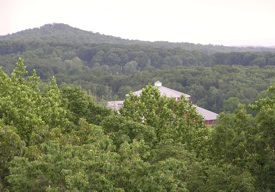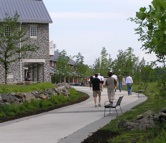The Union held a line from Culp's Hill in the north to the Round Tops at the south of this line. The Culp's Hill defense was successful due to the entrenchments constructed in the evening of the first day of Gettysburg. Terrain and tenacity helped the south end of the Union line (Little Round Top) survive Longstreet's attack on the second day. Union artillery was superior in quality and numbers to that available to the Confederate army this was used to great advantage by Chief of Artillery Henry Hunt as the Confederates tried to attack Union positions on Cemetery Ridge, especially during Pickett's charge.
Vicksburg MS surrendered on July 4th and the Army of Northern Virginia began its retreat to cross the Potomac. Foreign nations became even less interested in supporting the Confederacy. Gettysburg was a decisive Union victory, again Washington hoped the battle would be followed by an aggressive pursuit of the retreating Confederates. On July 13th and 14th the Army of Northern Virginia crossed the Potomac at Williamsport, while holding off Federal pursuit in the Battle of Falling Waters. At that same time some Union troops were sent to New York to suppress draft riots. The war continued. Many desperate battles were still to be fought, but the ability of the forces of the CSA to control the territory it claimed was beginning to crumble.

Visitor's Center (Big Round Top in background) taken from Culp's Hill Tower
There were many heroes and great stories at Gettysburg. Some heroes are also considered to be villains by others, as divisions grew between former comrades. Gettysburg took on more significance after the war as it became known as the "high water mark" of the Confederacy. The fault finders looking to explain the losses at Gettysburg came to full fruition after the war.
The events and sacrifice of the armies that fought at Gettysburg would make it one of America's most remembered battles. On November 19, 1863 President Lincoln turned this battlefield into America's most holy shrine. Lincoln came to Gettysburg to commemorate the national cemetery; his address has become the essential document of our American creed. A distillation of American belief spoken in two minutes.

